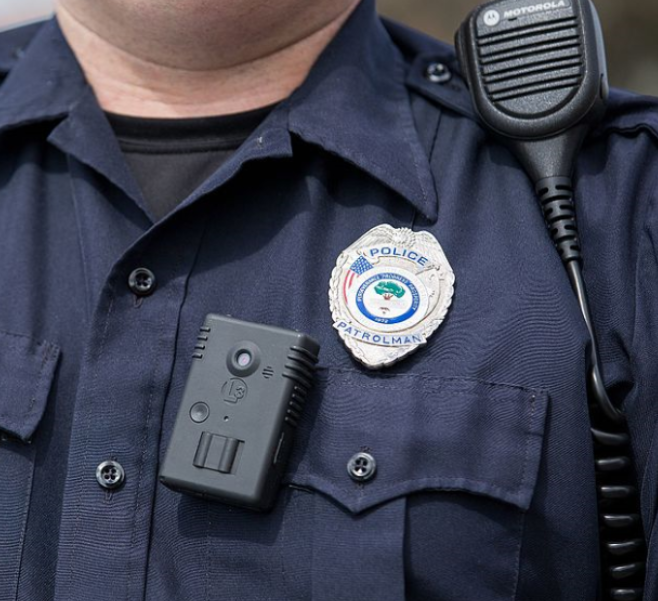In the wake of high-profile incidents sparking nationwide calls for greater law enforcement accountability and transparency, body-worn cameras (BWCs) have rapidly emerged as a powerful tool for agencies to rebuild community trust. However, effective BWC programs require much more than simply issuing cameras – clear policies governing areas like data storage, footage release, and officer compliance are crucial for ensuring the technology lives up to its potential benefits. As departments develop and revise these intricate policies, what role does public opinion play? In this post, we’ll explore whether current BWC policies align with community interests and how surveying residents can shape future policy decisions.
Public Perception of Police BWC Programs: Understanding the Stats
Recent surveys indicate strong overall support for police bodycam initiatives, but perspectives can vary across demographics, location, and program parameters. A 2022 Pew Research study found 76% of Americans favor the use of officer-worn cameras, up from just 33% in 2014. However, approval was higher among Black (90%) and Hispanic (83%) respondents compared to White adults (70%), highlighting the technology’s potential for rebuilding trust between law enforcement and minority communities. Support also differed regionally, with residents of urban areas (82%) being more supportive than suburban (77%) and rural (69%) residents.
These statistics point to a need for police agencies to dive deeper into local sentiment. Do current BWC policies adequately address concerns from diverse communities? Are specific procedures around areas like footage release generating public criticism? Asking these localized questions through rigorous surveys enables police leaders to make data-driven decisions aligning policies with citizen expectations.
Examining Policies on Footage Release After Use-of-Force Incidents
Few issues surrounding police body cameras generate more public debate than the release of footage after high-profile use-of-force incidents. On one side are advocacy groups and community members demanding full transparency to hold officers accountable. On the other are law enforcement officials concerned about violating due process rights, jeopardizing investigations, or inflaming public outrage with edited footage lacking full context.
Navigating this delicate balance requires extensive input from all stakeholders. Seattle’s police department instituted one of the nation’s most progressive bodycam footage release policies in 2017, mandating footage from serious use-of-force incidents be publicly posted within 5 days barring extenuating circumstances. This move followed years of public feedback and negotiation between the department, community groups, and federal monitors overseeing reforms.
For agencies developing new policies, or re-evaluating existing ones, community surveys provide invaluable perspective. What level of transparency do residents expect, and are current practices meeting that threshold? Do policies strike the right balance between serving public interests while also protecting investigation integrity and privacy rights? Getting direct, statistically-valid input lends policies legitimacy while proactively addressing public concerns.
Weighing Input on Data Storage, Security & Compliance Requirements
Beyond footage itself, BWC programs must contend with complex data policies for storage, security, redaction, and officer compliance. Storage costs for the immense video data can quickly escalate – many agencies partner with third-party cloud vendors raising concerns around data control and cybersecurity risks. There are also important questions around which types of footage receive permanent archiving versus shorter retention windows based on incident severity, privacy considerations for vulnerable populations like juveniles, and disciplinary measures for officer non-compliance.
These policy intricacies underscore why engaging the public is so vital. A 2019 survey in Oklahoma found 67% of residents prioritized footage remaining accessible for three years or longer but also had significant concerns around data breaches and hacking. Through surveys, agencies can gauge public risk/benefit tolerance for measures like cloud storage while demonstrating responsiveness to justified fears around video misuse.
Similarly on officer compliance, while virtually all policies require cameras be activated during enforcement actions, consequences for intentional deactivation or failed uploading vary considerably across agencies often drawing public criticism. Do residents perceive current discipline measures as too lenient? How much do policies empower supervisors to issue progressive discipline? Surveys capturing public views on these accountability mechanisms lend strengthened legitimacy to compliance measures.
Evaluating Public Opinions on Costs, Funding Models & Deployment Priorities
Unsurprisingly, BWC programs’ substantial costs often deter agencies from launching or expanding initiatives without dedicated funding sources. Beyond just the initial hardware investment, agencies must budget for data storage, IT personnel, training, policy development/audits, and more. Many have turned to federal grant programs or budget reallocations, while some municipalities are directly subsidizing department programs through tax revenue or bond measures at the ballot.
However, securing funding requires demonstrating program efficacy and aligning spending with public interests. Do residents support prioritizing BWCs over other technology investments like computer-aided dispatch or records management systems? What about tax/fee increases to sustain programs long-term? On deployment strategies, are agencies balancing resident demand for universal camera coverage with more strategic risk-based models? These are all critical survey questions allowing agencies to craft initiatives that meet public needs while justifying resource investments.
Fostering Transparency Through Public BWC Policy Reviews
For all their complexity, regularly reviewing and revising BWC policies promotes accountability and public trust. Substantive revisions naturally merit rigorous feedback periods garnering community input through surveys, town halls, and public commentary. However, fully transparent annual audits and reviews even without major changes showcase agencies’ commitment to responsiveness.
There’s also an opportunity to build surveys directly into these review processes. Querying the public on overall program satisfaction, thoughts on improvement areas, evolving views on specific policy provisions, and more establishes a consistent flow of insights. This creates a two-way feedback loop allowing agencies to communicate changes while understanding whether policies are truly meeting community needs.
Officer Survey provides law enforcement agencies with a powerful platform for conducting rigorous community surveys to guide decision-making around body-worn camera programs and other critical policies. Rather than relying on anecdotal feedback or limited public forums, the survey technology allows departments to scientifically sample a representative cross-section of residents and gather statistically-valid data reflecting the full diversity of perspectives and concerns. With intuitive tools for developing questionnaires aligned to specific policy areas, rapidly deploying surveys through multiple channels, and compiling comprehensive reports with visualized data and insights, Officer Survey keeps agencies’ fingers on the pulse of dynamic public opinion. This real-time community feedback empowers evidence-based policy refinements enhancing transparency, accountability and strengthening the crucial police-community partnership.
Conclusion
Police body-worn cameras carry transformative potential for improving transparency, accountability and community relations – but only if policies underlying these programs align with public interests and expectations. As we’ve explored, that alignment requires sustained community engagement.
Ongoing rigorous public surveys provide a critical feedback mechanism on every facet of BWC programs including footage release parameters, data management, compliance protocols, and funding models. Equipped with this localized data, police leaders can proactively refine policies garnering greater public trust and making these powerful technologies worthwhile investments.
Does your department have a process for gathering localized insights on BWC programs and policies? Our survey platform streamlines the entire process from questionnaire development aligned with policy goals through scientific sampling, data collection, and comprehensive reporting – ensuring agencies truly understand and meet the needs of their diverse communities. Request a demo today to take a pivotal step in optimizing your body-worn camera initiatives.








